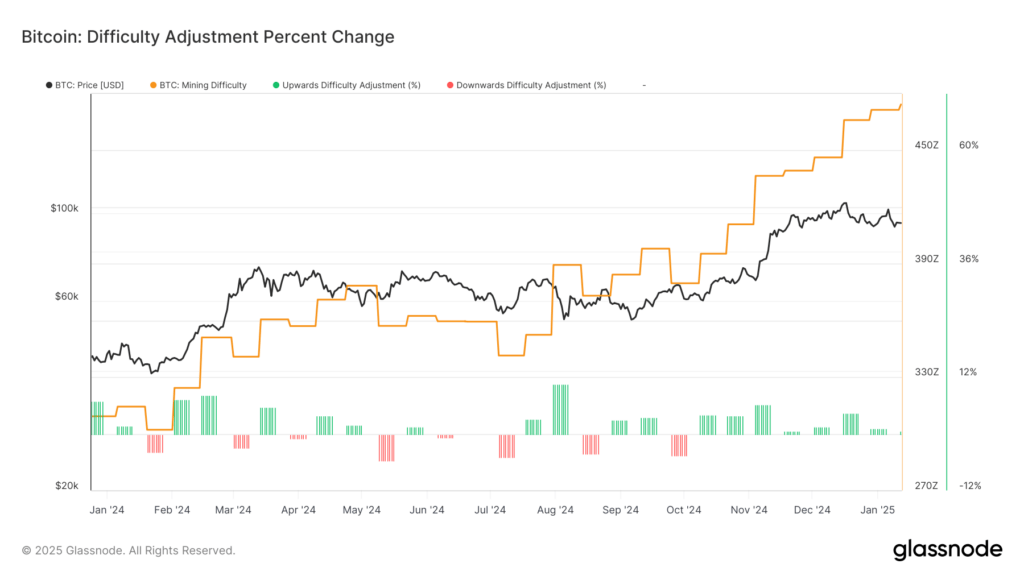New records continue to be set in the bitcoin (BTC) ecosystem, which has seen the mining difficulty setting increase to a new all-time high of 110.45T (trillion).
The difficulty setting is adjusted every 2016 blocks and recalibrated to ensure that blocks are mined on average every 10 minutes.
This is now the eighth consecutive positive adjustment in difficulty, putting more pressure on miners as the industry becomes more cutthroat and harder to mine a block for bitcoin rewards.
This is one of the reasons why some of the publicly traded miners have turned to the high-performance computing (HPC) and artificial intelligence (AI) industries, as they could not survive by mining bitcoins alone. For example, we have seen MARA Holdings (MARA) issue convertible bonds to purchase bitcoins. In addition, MARA optimizes income by lending your bitcoins to earn a single-digit return.
This is not the first time we have seen so many consecutive positive adjustments. We have seen these types of records in the past, during the summer of 2021, shortly after the mining ban in China, in which the hashrate fell by approximately 50%.
Shortly after this event, from July to November 2021, the difficulty generated nine consecutive positive adjustments and the last adjustment coincided with the bull market high when bitcoin reached around $69,000. Bitcoin then entered a bear market throughout 2022. The last positive adjustment marked the high in 2021.
However, the opposite occurred in 2018, when bitcoin made 17 positive adjustments since December 2017, coinciding with the bull market peak when bitcoin was around $20,000. A small negative adjustment occurred in July 2018, when the price was approximately $6,000.
The network then made another six consecutive positive adjustments before seeing multiple negative adjustments around the fourth quarter of 2018, when Bitcoin hit its cycle low at around $3,000.
No clear trend emerges when Bitcoin makes so many consecutive positive adjustments, but it has indicated near cycle highs and lows in the past. However, it is important to recognize that the hashrate’s continued strength, on a 7-day moving average, is 775 EH/s, and CoinDesk research implies that 1 zettahash per second can be reached before the next halving.




